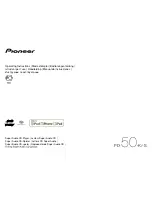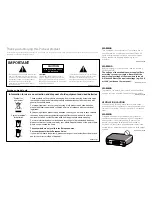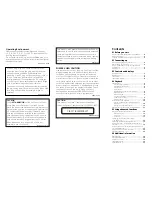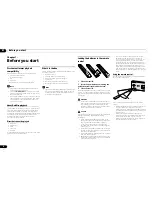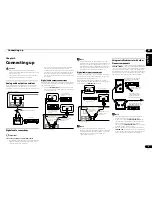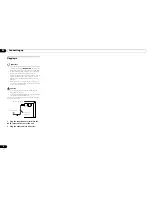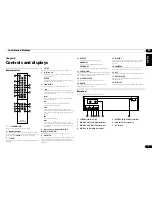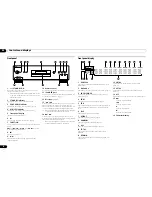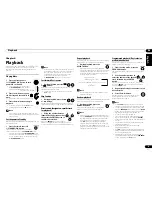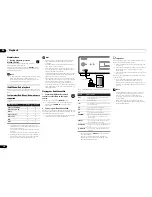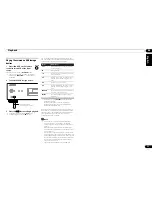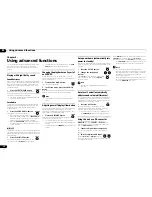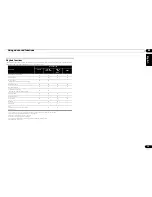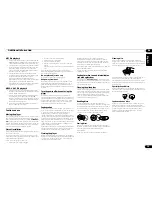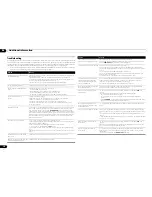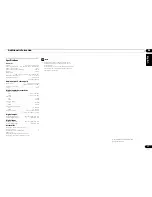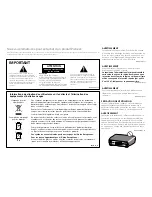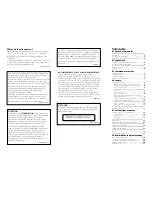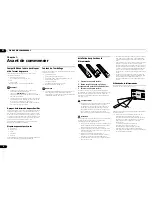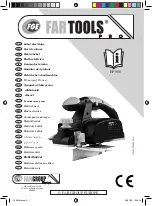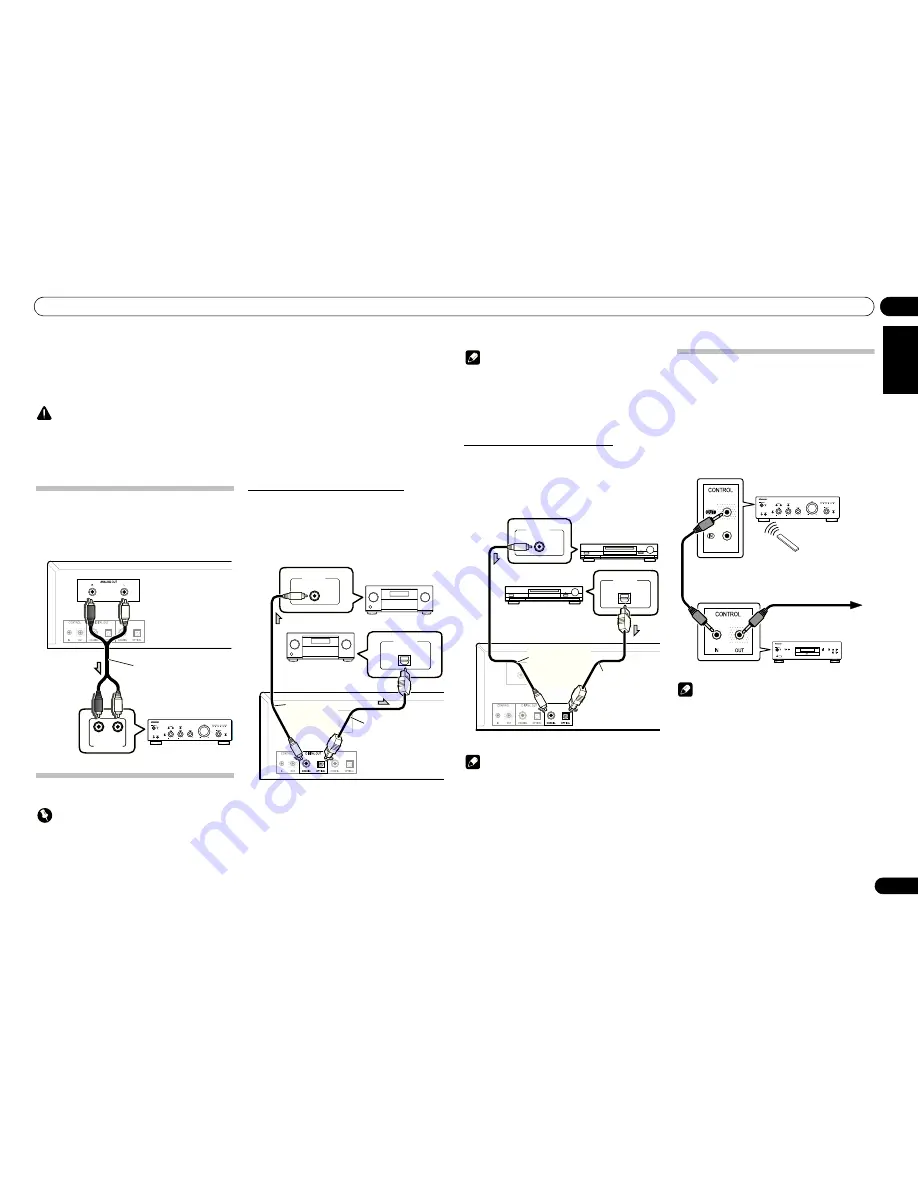
Connecting up
02
5
En
English
Deutsch
Français
Nederlands
Italiano
Español
Р
ус
ский
Chapter 2:
Connecting up
Caution
• Before making or changing the connections,
switch off the power and disconnect the power cord
from the AC outlet.
• Connect the power cord after all the connections
between devices have been completed.
Analog audio output connections
By connecting this unit’s analog audio output to the
analog audio input of an amplifier, you can use the
amplifier to enjoy analog audio produced from this unit.
Digital audio connections
Important
Care in the handling of optical fiber cables
• Do not allow optical fiber cables to be bent at sharp
angles. When storing optical fiber cables, roll in
coils of at least 15 cm diameter.
• When connecting optical fiber cables, align the
connectors correctly and insert fully. If the
orientation of the cable connector is incorrect and
excessive force is applied in the attempt to fasten
the connector, the connector may be deformed,
preventing the shutter from closing when the cable
is removed.
Digital audio output connections
If desired, the digital audio output from this unit can be
connected to an AV amplifier or digital recording device
(CD recorder, MD, etc.).
• This unit’s
DIGITAL OUT
terminals do not output
sound from SACD and DSD discs, nor from iPod/
iPhone/iPad devices.
DIGITAL IN
ANALOG
R
L
AUDIO INPUT
Amplifier
Audio cable (included)
PD-50’s rear panel
DIGITAL IN
DIGITAL IN
OPTICAL
DIGITAL IN
COAXIAL
AV amplifier or
digital recording
device
Optical fiber cable
(commercially
available)
Coaxial digital
audio cable
(commercially
available)
PD-50’s rear panel
AV amplifier or
digital recording
device
Note
• For digital audio output, CDs played on this unit
must produce linear PCM signals with a sampling
rate up to 44.1 kHz and quantitative bits up to 16
bits (some discs may not be playable depending on
the connected component and environment). For
information about other files, see page 14.
Digital audio input connections
This unit can be used as a D/A converter by connecting
the digital audio output of a digital audio component to
the digital audio input of this unit.
See the section “
Using this unit as a D/A converter
”
(page 12) for details about the audio output of signals
input to this unit’s
DIGITAL IN
terminals.
Note
• This unit supports linear PCM signals with
sampling rates and quantitative bits up to 192 kHz/
24 bits (operation may not be possible in all cases,
depending on components connected and
operating environment).
Using centralized control with other
Pioneer components
This unit and other Pioneer components equipped with
CONTROL IN/OUT
jacks can be controlled with a single
remote control by aiming the remote toward the signal
receptor on the AV amplifier or other component. This
also allows remote control of components not equipped
with a remote sensor, or installed in places where the
component’s remote sensor cannot be accessed.
Note
• For connections use a commercially available
monaural miniplug cord (without resistor).
• When connecting the
CONTROL IN/OUT
jacks,
commercially available audio cords must also be
used to make analog connections. Merely
connecting the
CONTROL IN/OUT
jacks alone will
not allow proper system control.
• When a control cord is connected to the PD-50’s
CONTROL IN
jack, the PD-50 cannot be controlled
by pointing the remote control at the unit's remote
sensor (the sensor is automatically disabled).
DIGITAL IN
DIGITAL IN
COAXIAL
DIGITAL IN
OPTICAL
Coaxial digital
audio cable
(commercially
available)
Optical fiber cable
(commercially
available)
PD-50’s rear panel
Digital audio 1
Digital audio 2
To other Pioneer
component equipped
with CONTROL IN jack
Remote control for
AV amplifier, etc.
Point the remote
control toward the
signal receiver on
the AV amplifier, etc.
Other Pioneer component
equipped with CONTROL
IN/OUT jacks
PD-50
PD-50_PWSYXZT8.book 5 ページ
年
月
日 金曜日 午前
時
分

